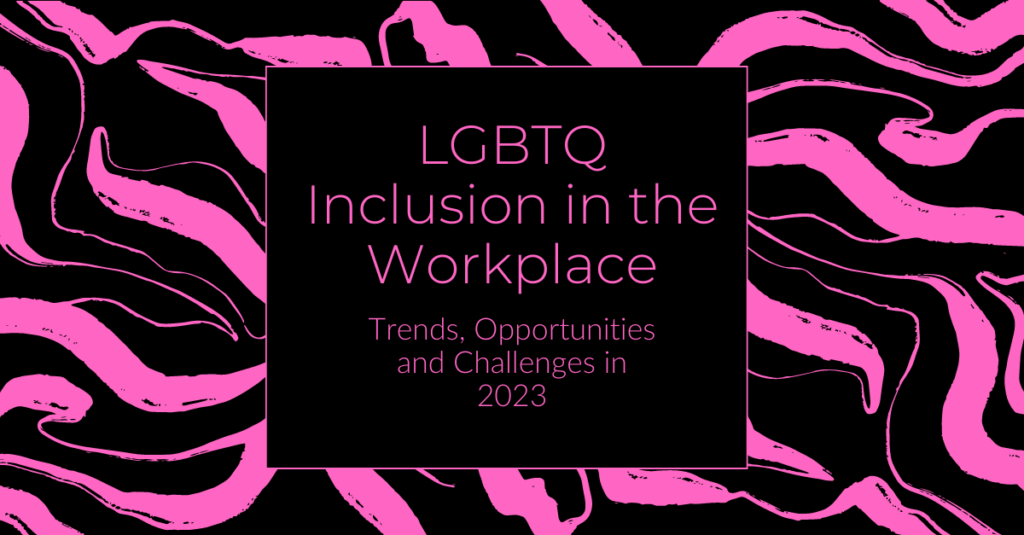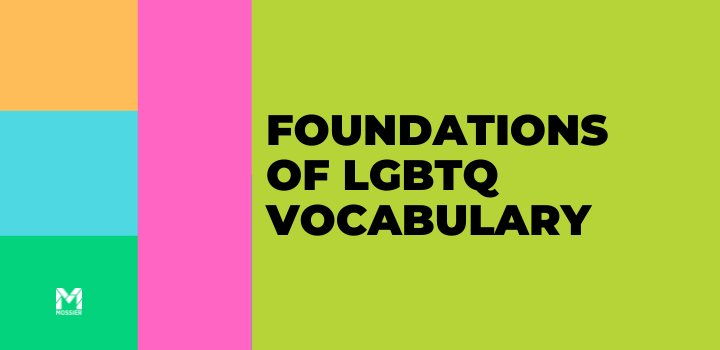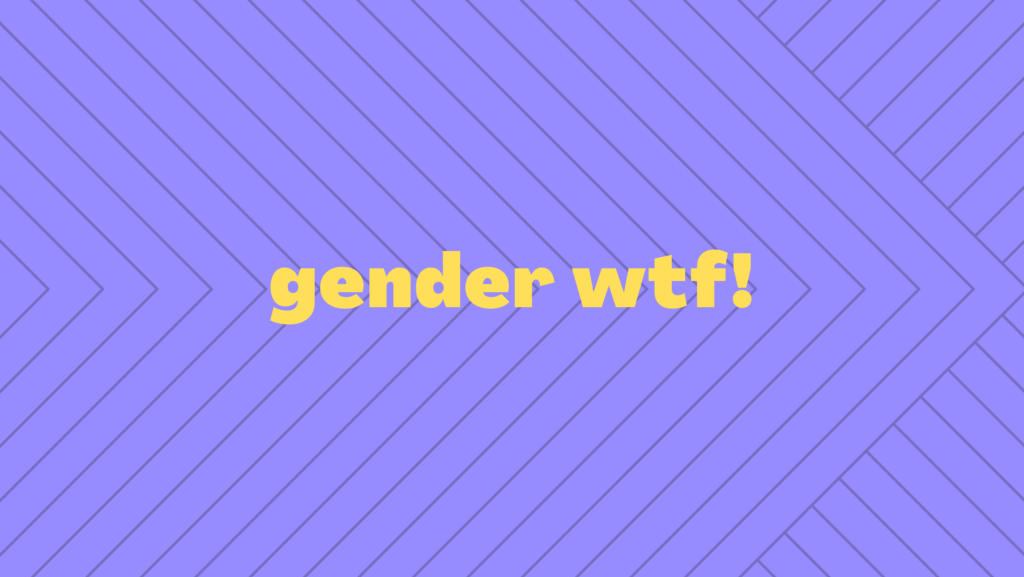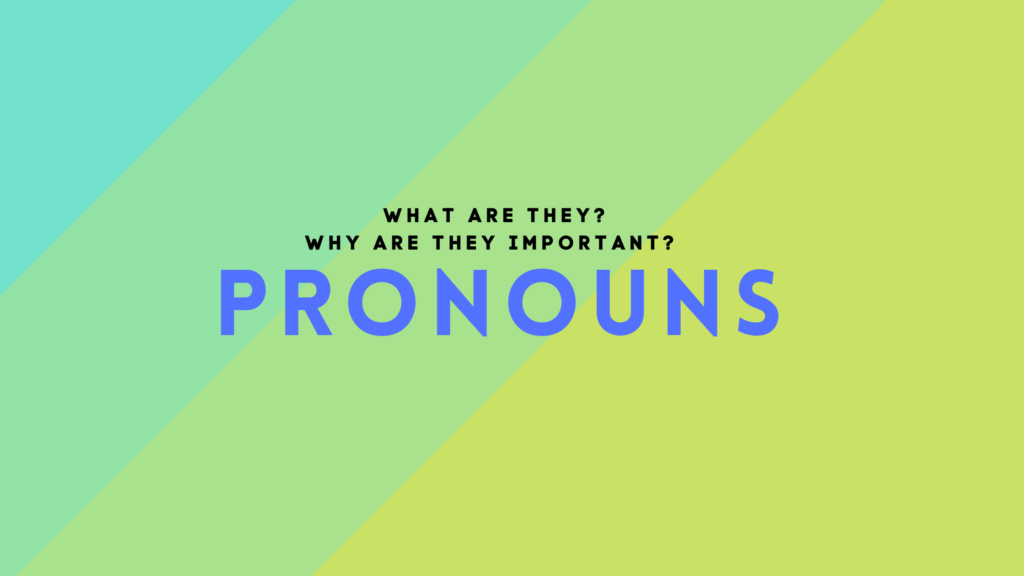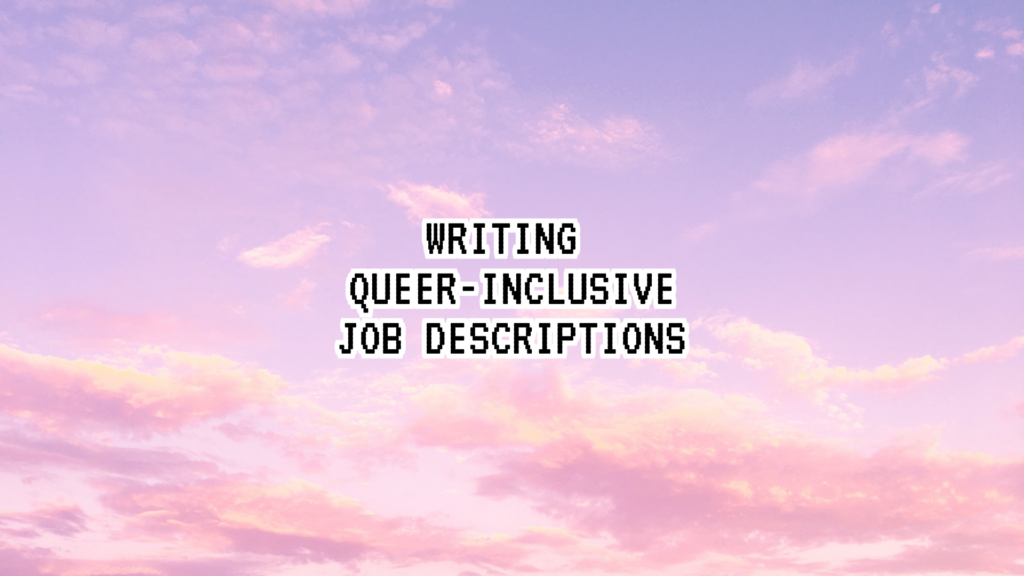
WRITING QUEER-INCLUSIVE JOB DESCRIPTIONS
Watch for suggesting that your role favors a gender over another.
Job positions may unintentionally communicate that the role is more geared towards men or women. The gender binary is so on its way out! LGBTQ peeps are a diverse group that spans a broad spectrum of gender identity. Swapping out and he/him or she/her pronouns in favor of gender-neutral they/them pronouns is an excellent practice!
Coding words particularly masculine or feminine.
Job postings tend to favor more masculine words and phrases (eye roll), and this means that future hires who have been socialized or raised as a man are spoken to in language and qualities that they are used to being described as. However, those who have not been socialized as men are less likely to identify with the word choices and will see themselves as more “unfit” for the role. Words like strong, driven, competitive, and expert are coded as strong masculine and replaced with more neutral terms such as proven, passionate, results-oriented, and trained. Yes, this can be nuanced, and it may take practice to improve your skills! Here’s an excellent resource for identifying those words and replacing them with more neutral options.
Equal Opportunity and Diversity Statements Matter!
According to Burning Glass Technologies, in the first half of 2019, about one-third of U.S. job postings had some type of EEO statement. Nearly 20% used “sexual orientation” and 17% included “gender identity.” We don’t think 20% is much to be proud of.
Many LGBTQ-inclusive employers have an equal opportunity statement such as:
We’re an equal opportunity employer. All applicants will be considered for employment without attention to race, color, religion, sex, sexual orientation, gender identity, national origin, veteran, or disability status.
If you post an equal opportunity statement, you must include gender identity and sexual orientation. Your company doesn’t have these dimensions of diversity in your statement? Drop us a line because we gotta talk. At one point, including an equal opportunity statement was considered super-inclusive; now, it’s simply a baseline. Inclusive employers are naming inclusivity with greater definition, going above and beyond legal compliance.
Check this out:
Our leadership is accountable to all communities, customers, including but not limited to individuals who identify as Black, Indigenous, people of color, LGBTQ, veterans, persons with disabilities, womxn, religiously affiliated, and/or neurodivergent.
Some organizations are even adopting their specific inclusivity statements just for the LGBTQ community! This is definitely major and would send a strong message to the LGBTQ community that your company SEES us. An example would read something like:
Honoring the unique experiences and contributions of Lesbian, Gay, Bisexual, Transgender, and Queer people is a core piece of our overall equity framework and we have made a commitment to the LGBTQ inclusion journey by actively listening, learning and engaging with our LGBTQ workers, customers and stakeholders.”
Make your benefits inclusive of all family types
The terms husbands and wives assume gender identification, not to mention being exclusionary to couples that identify as non-binary. Instead, swap it out for spouses or partners. Same goes for maternity and paternity leave; parenthood or parental time off is a better way to go.
LGBTQ-inclusive language
Anxious about using the best language when talking about everyone LGBTQ? You’re not alone, and don’t be too hard on yourself. Some of the best ways you can make your post truly inclusive are:
- Sexual preference. That implies that being lesbian, gay, or bisexual is a choice and could be cured. Use orientation instead.
- Transgendered. Swap this out for Transgender people. Remove words like transgenders and transvestite from your postings (um, and like, everywhereelse). Homosexual is an outdated medical term to describe Queer people and exchange sex-change for transitioned or transitioning.
- Looking for more info? Check out this fantastic resource from GLAAD and Movement Advancement Project! (click to download)

